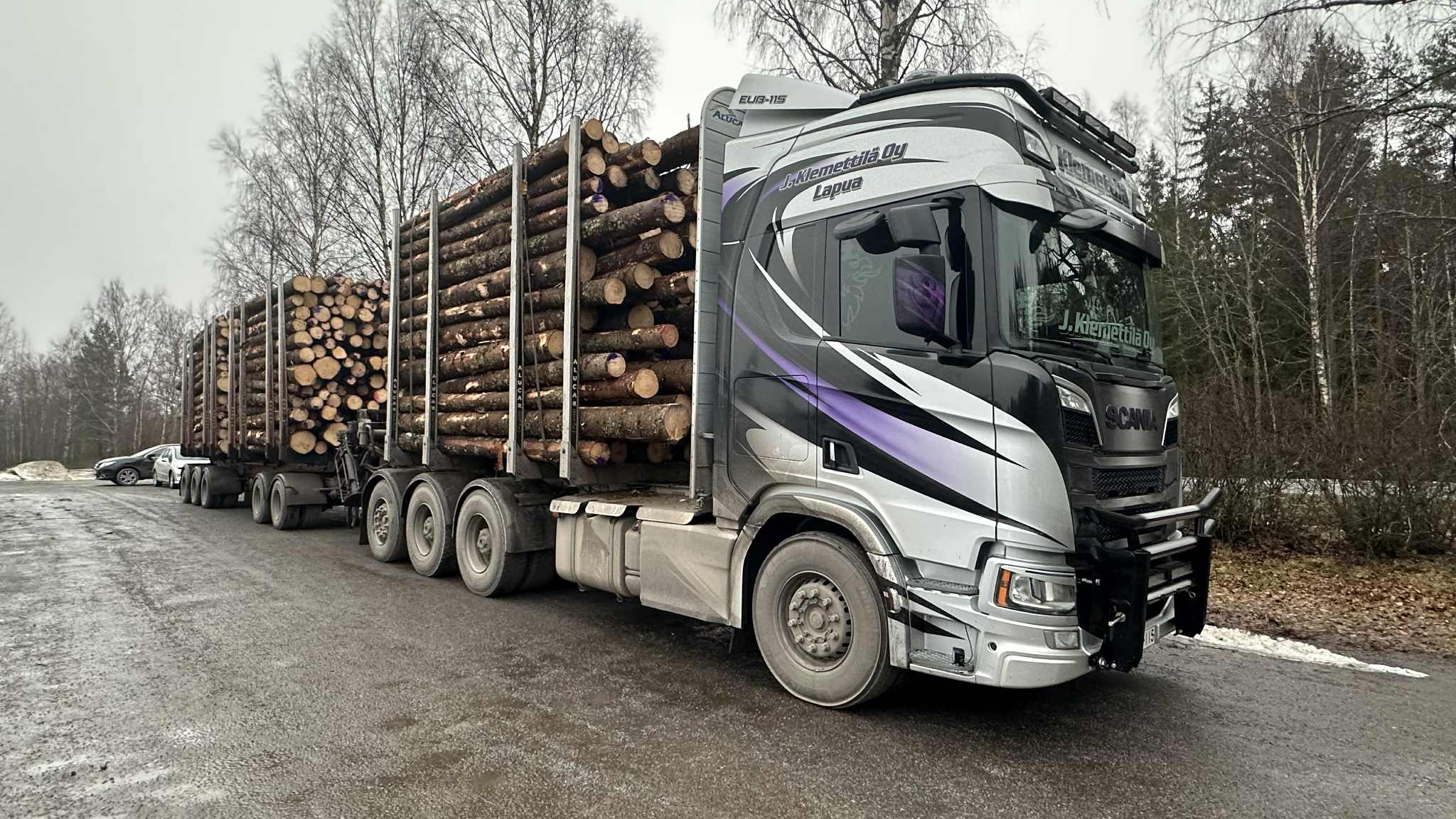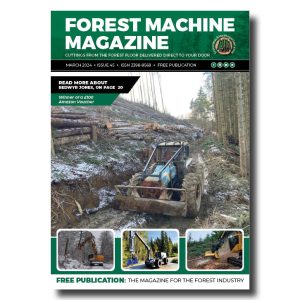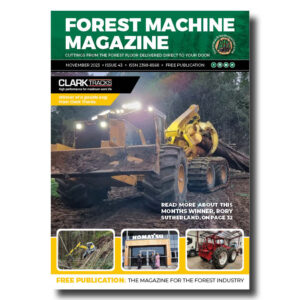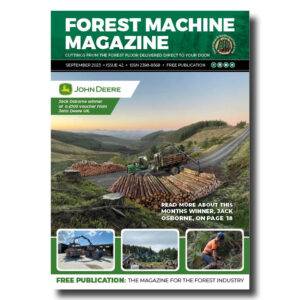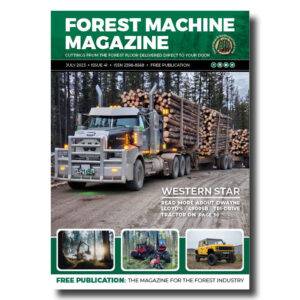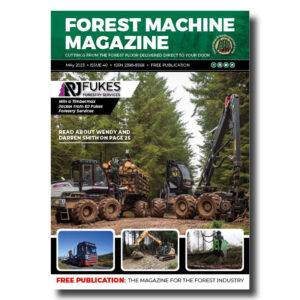Six of the major Nordic timber and forest industry companies posted largely challenging results for H1 2025
Most companies reported declining profitability despite mixed sales performances
Elevated raw materials costs, global trade uncertainties and currency volatility created significant headwinds across the sector
Strong performers show resilience despite sector-wide pressures
Finland’s Koskisen Corporation, whose main business is in sawn timber and panels, maintained its position as the strongest performer with remarkable growth, achieving a 24.3% year-on-year increase in revenue to €176.0 million ($205.5 million) and adjusted EBITDA rising 33.2% to €19.8 million. The company’s sawn timber segment was particularly strong, with revenue growing 47.2% to €96.2 million and EBITDA jumping dramatically to €9.6 million from €2.2 million in the first half of 2024.

-
That’s a remarkable amount of work hours for a single machine, the Norcar 600 owned by Erkki Rinne is taken well care of, it even has the original Diesel engine.
-
Kieran Anders is a forestry contractor working in the lake district. His work involves hand cutting and extracting timber using a skidder and tractor-trailer forwarder.
-
It is not possible to eliminate chain shot, but there are simple steps that can be taken to reduce the risk.
-
Arwel takes great pride in the fact that the mill has no waste whatsoever, “the peelings are used for children’s playgrounds, gardens and for farm animals in barns in the winter and the sawdust has multiple uses in gardens and farms as well.
-
Timber hauliers need to encourage young blood in, and also look after the hauliers we have, we need make the sector a safe and positive place to work.
FIND US ON
Related Posts
Koskisen’s sawmill production reached record levels, and the strategic acquisition of Iisveden Metsä’s business in June expanded sawmill capacity by approximately 35%. “The positive development of the sawn timber industry segment continued,” said chief executive officer Jukka Pahta, though acknowledging that current raw materials prices are “not sustainable from the point of view of the profitability of the industry.”
Sweden’s SCA demonstrated remarkable resilience with net sales increasing 7% to 10.5 billion Swedish krona (€932 million) and maintaining an impressive EBITDA margin of 34.9% at SEK 3.7 billion. The company’s high degree of self-sufficiency in wood raw materials, energy and logistics proved crucial in maintaining strong profitability against rising input costs. SCA’s wood segment delivered particularly robust performance with net sales increasing 24% to SEK 3.2 billion and EBITDA growing 35% to SEK 546 million, supported by higher selling prices and delivery volumes of 1,092,000 cubic meters (up by 19% year-on-year).
The Finnish and Swedish company Stora Enso delivered solid performance with sales increasing approximately 5% and maintaining operational stability despite volatile market conditions. The company reached a major milestone with an agreement to divest approximately 175,000 hectares of forest land (equivalent to 12.4% of total forest holdings in Sweden) for an enterprise value of approximately €900 million.
CEO Hans Sohlström noted: “While market conditions remained challenging, we focused on the areas within our control – enhancing sourcing, operational efficiency, commercial excellence, working capital, and fixed costs.”
What major challenges have hit other key players in the Nordic timber market?
The Swedish company Södra faced the most significant challenges among the six Nordic companies, posting an operating loss of SEK 389 million in the second quarter of 2025 compared to a profit of SEK 398 million in the same quarter last year. Net sales declined 4% to SEK 7.2 billion for the quarter, with results severely impacted by exchange rate effects of over SEK 580 million and scheduled maintenance shutdowns costing approximately SEK 240 million. President and CEO Lotta Lyrå commented: “The second quarter was challenging for Södra. Increased global uncertainty, combined with rapid currency fluctuations and high raw materials prices, has created a triple external effect that puts pressure on our profitability.” In response, Södra initiated a comprehensive action program to strengthen competitiveness and profitability.
Finland’s UPM reported 2025 first-half sales of €5.05 billion (down 3% year-on-year) with comparable EBIT decreasing 20% to €413 million, facing significant adversity from global trade tensions. CEO Massimo Reynaudo explained: “Tariff announcements caused uncertainty in global trade, which weakened demand and the US dollar. These had a negative impact, particularly on the pulp and communication paper businesses.” The company’s advanced materials businesses showed greater resilience, though pulp operations were indirectly impacted by escalating trade tensions, particularly affecting Chinese demand. Another Finnish forest major, Metsä Group, struggled with a challenging first half, reporting sales of €3.07 billion (up by 4.5% year-on-year) but seeing comparable operating results decline to €44 million from
€57 million. President and CEO Jussi Vanhanen noted: “Higher costs – especially higher wood raw materials prices – weakened the profitability of all business operations.” The company has initiated a €300 million cost savings and profit improvement program to address these challenges.
Sawn timber divisions show mixed performance amid challenges
The sawn timber divisions across these Nordic companies demonstrated the sector’s resilience despite significant cost pressures, with most achieving volume growth even as margins came under strain.
Koskisen led the sector with exceptional sawn timber performance, delivering 197,200 cubic meters (up by 41.4% year-on-year) in the first half of 2025. The company’s new sawmill in Järvelä, southern Finland, continued its ramp-up toward the target of 450,000 cubic meters annual capacity, while the June acquisition of Iisveden Metsä added approximately 140,000 cubic meters of annual spruce sawn timber production. Despite challenging market conditions, Koskisen maintained strong customer relationships and benefited from market-specific product concepts, achieving significant improvements in shift-specific production and operational indicators.
Södra’s wood division experienced the most severe challenges, with operating profit collapsing to SEK 3 million from SEK 128 million in the second quarter of 2024. The division was heavily impacted by significantly higher saw log costs, though the company achieved some recovery through higher delivery prices and maintained positive developments in its CLT (cross-laminated timber) business. Despite the weak construction market, Södra’s CLT operations showed increased sales and production, reflecting the growing proportion of timber used in construction applications. SCA’s wood segment delivered robust volume growth with strong operational performance, benefiting from its strategically located sawmills close to forest holdings in Northern Sweden.
Source: fastmarkets.com

Sign up for our free monthly newsletter here
Contact forestmachinemagazine@mail.com to get your products and services seen on the world’s largest professional forestry online news network.
#homeoflogging #writtenbyloggersforloggers #loggingallovertheworld
Written by loggers for loggers and dedicated solely to the equipment used in forestry operations.

